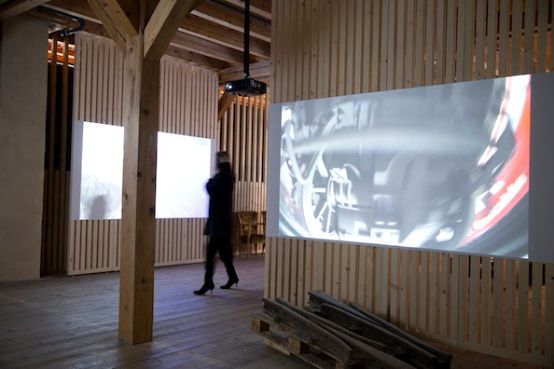RhB locomotive as an instrument
The Albula Railway Museum in Bergün is hosting the special exhibition "My first sonic Lok" until February 28, 2014. St. Gallen sound artist Andy Guhl uses a Rhaetian Railway locomotive as a musical instrument.

Guhl creates audible and visible sound and light waves from the inaudible electromagnetic vibrations of a 65-ton, 2400 hp machine and uses them to compose an auditory and visual experience. Various motifs can be perceived, such as the power when starting up, different engine states or the condition of the rails. Guhl has installed a 5-channel video work in the museum's temporary exhibition room. With these recordings, he takes the viewer on a journey from Samedan to Landquart. Technology and nature appear in poetic, unfamiliar images and sounds - the landscapes pass by, sometimes rapidly and sometimes leisurely.
At least since Arthur Honegger's (1892-1955) composition Pacific 231, in which the railroad journey on a Pacific steam locomotive is musically realized in the form of a tone poem, the locomotive is a fascinating motif in classical music. The engine, the rhythmic power, the journey to top speed - Honegger has realized this characteristic in his composition in a vivid and impressive way. The work was composed in 1923 and premiered at the Paris Opera on May 8, 1924.
Andy Guhl (*1952) has made a name for himself with the duo Voice Crack. In 2001, they performed at the Venice Biennale, where they played the sounds of the Grand Canal in the church of San Staë. Luigi Russolos Manifesto of noise music (1913) paved the way for the emergence of experimental electronic music, as played by Voice Crack together with Poire Z, Borbetomagus (US), Otomo Yoshihide (Japan), Phil Minton (UK), Erik M (FR) and Jim O'Rourke (US), among others.







